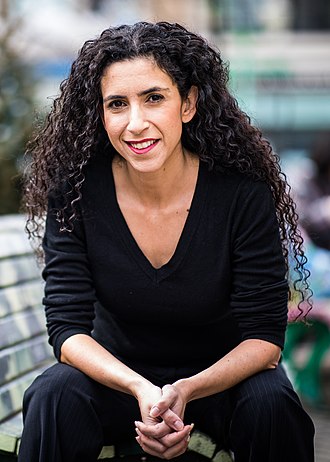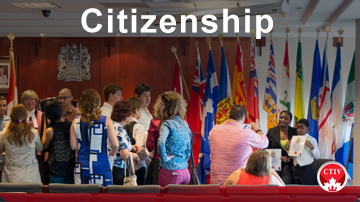
Introduction: A New Era for Canadian Immigration
In a strategic move ahead of the 2025 federal election, Prime Minister Mark Carney has announced a sweeping cabinet shuffle, with Quebec MP Rachel Bendayan stepping into the role of Canada’s new Immigration Minister. This breaking news signals potential shifts in immigration policy, a cornerstone of Canada’s economic and social fabric. Let’s unpack the implications of this change, the legacy of outgoing minister Marc Miller, and what lies ahead for Immigration Refugees and Citizenship Canada (IRCC).
Why the Cabinet Shuffle Matters
Cabinet reshuffles are a staple of Canadian politics, allowing leaders to realign priorities, address public concerns, and reward performance. The latest shuffle follows Prime Minister Carney’s vision to balance housing affordability, labor needs, and sustainable population growth. With immigration contributing to over 90% of Canada’s population growth, the role of the immigration minister is more pivotal than ever.
Meet Canada’s New Immigration Minister: Rachel Bendayan
Rachel Bendayan, MP for Outremont, Quebec, brings a dynamic background to IRCC. Born into a Moroccan-Jewish family and raised in Montreal, her career spans law, education, and politics:
-
Legal Expertise: A McGill University graduate, Bendayan specialized in international trade law at Norton Rose Fulbright and taught at Université de Montréal.
-
Political Acumen: Previously serving as Parliamentary Secretary to key ministries (Finance, Small Business), she’s adept at navigating complex policy landscapes.
-
Advocate for Diversity: Her multicultural roots and focus on official languages highlight her commitment to inclusivity—a trait critical for leading Canada’s diverse immigration system.
Bendayan’s appointment suggests a focus on strategic immigration that aligns with Carney’s priorities, including sustainable intake and economic alignment.
Marc Miller’s Legacy: Reshaping Canada’s Immigration System
Outgoing minister Marc Miller leaves a transformative legacy. His tenure addressed pressing challenges like housing shortages and labor market imbalances through bold measures:
-
Caps on Temporary Residents: Reduced international student permits and temporary foreign worker inflows to ease pressure on housing.
-
Express Entry Reforms: Introduced occupation-specific draws to target healthcare, trades, and STEM professionals.
-
Permanent Resident Reductions: Scaled back PR targets to 2021 levels, prioritizing quality over quantity.
Miller’s policies balanced economic needs with affordability concerns, setting a precedent for future ministers.
Prime Minister Carney’s Vision for Immigration
Mark Carney, former Bank of Canada Governor, has long emphasized sustainable growth. His immigration priorities likely include:
-
Temporary Resident Caps: Aligning intake with housing and infrastructure capacity.
-
In-Canada Prioritization: Fast-tracking PR for temporary workers and students already contributing locally.
-
Labor Market Alignment: Reducing reliance on low-wage foreign workers while filling skilled gaps.
Carney’s mandate letter to Bendayan may emphasize these goals, reshaping IRCC’s approach post-2025.
Why Immigration Dominates Canadian Politics
Immigration isn’t just policy—it’s a lifeline for Canada’s economy and demographics. Key reasons for its political weight:
-
Economic Growth: Immigrants fill 37% of labor shortages in critical sectors like healthcare.
-
Demographic Stability: With an aging population, Canada relies on newcomers to sustain social programs.
-
Global Reputation: Canada’s welcoming image attracts talent, fostering innovation and cultural richness.
Past immigration ministers like Sean Fraser (now Housing Minister) and Marc Mendicino (Chief of Staff-designate) have ascended to higher roles, underscoring the portfolio’s prestige.
What’s Next for IRCC Under Bendayan?
Expect Bendayan to tackle pressing issues:
-
Housing-Immigration Balance: Streamlining newcomer intake with provincial housing plans.
-
Policy Continuity vs. Change: Will she maintain Miller’s caps or pivot to address labor shortages?
-
Tech-Driven Solutions: Leveraging her legal background to modernize application processes and reduce backlogs.
Her early moves will set the tone for Canada’s immigration strategy in a critical election year.
Conclusion: A Turning Point for Canadian Immigration
As Rachel Bendayan takes the reins at IRCC, her leadership will shape Canada’s ability to attract talent while addressing domestic challenges. For prospective immigrants, staying informed on policy shifts is crucial. Whether you’re applying for a study permit, work visa, or PR, understanding these changes ensures you’re prepared for the evolving landscape.
Stay tuned for updates as Canada navigates this new chapter under PM Carney and Minister Bendayan. Share your thoughts below—how do you think this shuffle will impact immigration?





